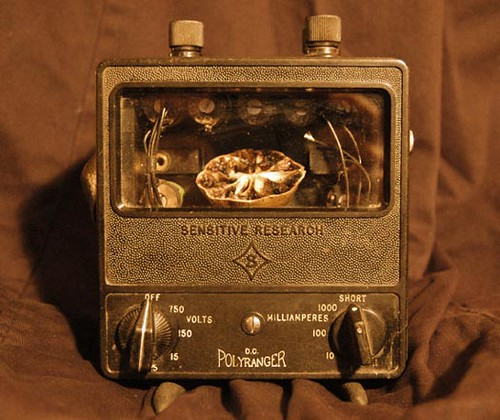 Lev is a machine for playing a theremin.
Lev is a machine for playing a theremin.
Lev is named after Lev Termen (Leon Theremin), a Russian scientist who invented one of the first electronic musical instruments, an instrument which is played without touching, and which bears his name.
Lev is made out of an old floor lamp, some plumbing supplies, a few empty mint tins, and some microprocessors. Lev will never replace the human theremin virtuoso, although, as there are so few of the latter, a mechanical substitute may someday be vital to our economy.
 “On March 25th, 2006 the Flux Factory space in Long Island City was transformed into a giant, interactive music box.
“On March 25th, 2006 the Flux Factory space in Long Island City was transformed into a giant, interactive music box.
 The wind-up mermaid box was created for the 2003 Mermaid Show. Reminiscent of an old penny-arcade peep show, the mermaid box has a peephole on top through which a shining mermaid can be seen only when the box is wound up with its big brass key.
The wind-up mermaid box was created for the 2003 Mermaid Show. Reminiscent of an old penny-arcade peep show, the mermaid box has a peephole on top through which a shining mermaid can be seen only when the box is wound up with its big brass key. Nexus Gallery in Philadelphia commissioned the Silence Organ for Innovative Instruments, a show of artists’ instruments presented in conjunction with the Philadelphia Museum of Art and Citycircus, a celebration of John Cage.
Nexus Gallery in Philadelphia commissioned the Silence Organ for Innovative Instruments, a show of artists’ instruments presented in conjunction with the Philadelphia Museum of Art and Citycircus, a celebration of John Cage.